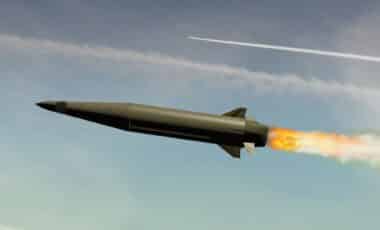Based on an extensive evaluation involving over 60 different indicators, the Global Firepower Index offers a detailed picture of the relative strength of military forces around the globe. The ranking integrates criteria such as military unit totals, financial strength, logistical capabilities, and geographic factors.
This year’s list highlights both continuity and change. Longstanding powers maintain their dominance, while the rise of Asian military investments signals an evolving global landscape. The methodology used ensures smaller but technologically advanced nations are not overshadowed by larger countries with less efficient systems.
Golden Dome Unveiled: America’s $175 Billion Bet to Stop Missiles From Space
Global Leaders Retain Dominance
The United States remains the undisputed global military leader in 2025, with a PwrIndx score of 0.0744, the closest to the theoretical perfect score of 0.0000. This standing reflects massive investments in research and development, a worldwide network of military bases, and top-tier logistical infrastructure. These factors enable unparalleled global force projection capabilities.
Russia and China are tied for second place with a score of 0.0788, highlighting their continued strategic rivalry. Both countries have demonstrated increased defense spending, modernization of their armed forces, and growing influence in global military affairs. Their parity in the rankings points to an ongoing and intensifying balance of power in Eurasia.
India ranks fourth with a score of 0.1184, securing its place among the top military powers through continued modernization and strategic development efforts. Its position reflects a commitment to becoming a key regional and global security actor.
Rising Asian Militaries Reshape the Landscape
Asia features prominently in the 2025 ranking, with South Korea and Japan claiming spots in the top ten. South Korea rises to fifth place with a PwrIndx of 0.1656, demonstrating the country’s focused investments in high-tech defense systems and operational readiness. Japan follows in eighth place with a score of 0.1839, the result of a proactive defense policy that has expanded its military posture in recent years.
This increased presence underscores what is described as a “major geostrategic shift,” with Asian nations strengthening their defense capabilities to match regional and global ambitions. These developments contribute to a rebalancing of military influence beyond traditional Western powers.
Turkey, often viewed as a bridge between Europe and Asia, holds ninth place with a score of 0.1902, reinforcing its strategic importance and growing defense industry. Its position supports the broader trend of Asia’s expanding military prominence.
Western Europe Maintains Strategic Influence
Despite growing competition, Western Europe continues to assert its military significance. The United Kingdom ranks sixth with a PwrIndx of 0.1785, bolstered by ongoing investments in modernization and force readiness. France follows in seventh place with a score of 0.1878, reflecting its consistent defense spending and advanced military infrastructure.
Italy closes out the top ten with a score of 0.2164, underscoring its resilience in the European defense landscape. As reported by the media, these European powers remain influential due to their long-standing military traditions, strategic alliances, and commitment to technological advancement in defense.








